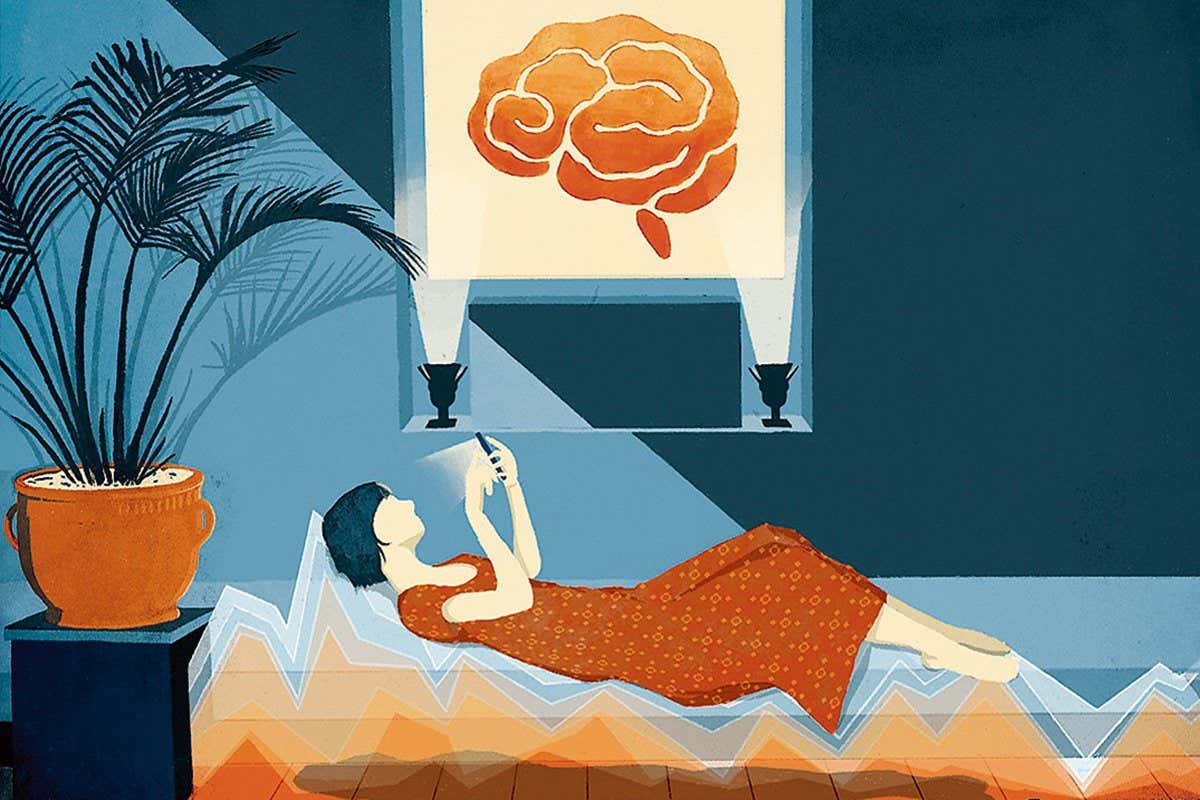An inability to access face-to-face therapy has led to the rise of tech alternatives, but do they really improve mental health, asks Eleanor Morgan
Technology
| Comment
6 April 2022
Simone Rotella
ACROSS all forms of psychiatric therapy, there is a focus on developing a relationship between patient and therapist. This is known as the therapeutic alliance, a crucial factor in the success of sessions. But such therapy can be expensive, hard to access and have long waiting times, so many people don’t get to experience this kind of relationship.
Tech companies have stepped in to fill the gap, and people wanting fast support can now use an app rather than having to wait feeling frustrated or demoralised. In many ways this is good, but there are reasons to be cautious about the boom in easy access therapy.
Therapy apps often use computerised cognitive behavioural therapy models, mindfulness and journalling to help people manage low-mood and anxiety. The popular self-therapy app Bloom offers guided exercises to help users examine their thoughts and behaviour, featuring a library of pre-recorded video clips, with titles such as “Learning to love yourself”. Happify claims that “your emotional well-being can be measured”, scores it for you and provides games and tasks, like cognitive behavioural therapy-informed thought exercises, to help you improve your mood.
Such discreet, low-cost interventions may help increase self-awareness and offer a sense of control, but a recent meta-analysis of mobile app mental health interventions – based on data from nearly 50,000 users – didn’t find convincing evidence that apps improved low mood or reduced anxiety or suicidal thoughts (PLoS Digital Health, doi.org/gpgmn3).
There can also be a placebo effect: a 2018 study compared the guided meditation app Headspace – one of the most popular on the market, with 2 million subscribers in 2020 – against a “sham” app that focused on guided breathing without a mindfulness aspect. Participants reported improved outcomes like critical thinking (being able to analyse uncomfortable thought patterns, say) with both versions.
A therapy app may seem a proactive step, and capturing someone’s thought patterns is technically possible via clinical questionnaires like the GAD-7, which apps may create their own versions of. The results can then be used to gauge improvements. However, self-reporting bias means we only ever have a minor understanding of what is going on. We can’t explore the deeper meaning of someone’s emotional problems with standardised questionnaires, least of all without another human present.
Then there is the issue of data. If we are sharing vulnerable information with an app, it would be good to know how that information will be handled. A 2019 study found that nearly half of such apps didn’t have a privacy policy. The study references the meditation app Happify, stating that it “requested 18 permissions, including access to users’ text messages and contacts list”. On reviewing Happify’s current privacy policy, there is no mention of text messages, but other information still gets collected.
Bloom states that it may partner with third parties to share information in order to provide or improve its services. This may seem like inoffensive language when you want to get started on trying not to feel bad. Then you see Bloom advertising on huge billboards with statements like: “To all 8k users who felt tired. We’re here to wake you up.”
Tech companies analysing our private thoughts and plastering them up on the streets feels like a wake-up call. The therapy sector needs a radical overhaul for many reasons, and the tech solutions offered in this unregulated field may help in some way, for some people. But at what cost?
Eleanor Morgan is a journalist and trainee psychotherapist @eleanormorgan
More on these topics:
